Corsets and fashion silhouette
Corset history 1500-1900
Corset history 1900-present
Corset making - fabrics and bones
Corset making - other stuff
Corset making - bone tape
Corset - mock up fitting
Corset wearing
Today, I am going to to share some photos I made while sewing the corsets for this new pattern.
This set of corsets is being made with all the recommended materials for a strong durable corset. I'm using coutil for the interlining and steel boning with bone tape for support, and official front busk closures.
Anyway, first mark the spacing for the clasps on the front facing piece.
Totally worth the investment. Here is the link to Wawak where you can buy one for $2.25.
Note that I have first run a line of stitching on the fold line that will keep the fabrics together when they are folded. Also, see how I've trimmed back the coutil interlining.
If you look back up at the photo where I am slipping the busk piece with the clasps into place, you can see I've trimmed back the coutil for the facing piece in the same way.
I hope you have fun with this corset pattern and don't feel as if you need to copy any of my versions ... let your imagination run wild!
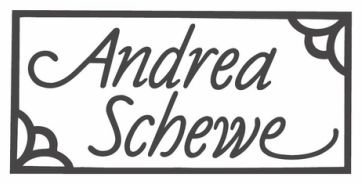
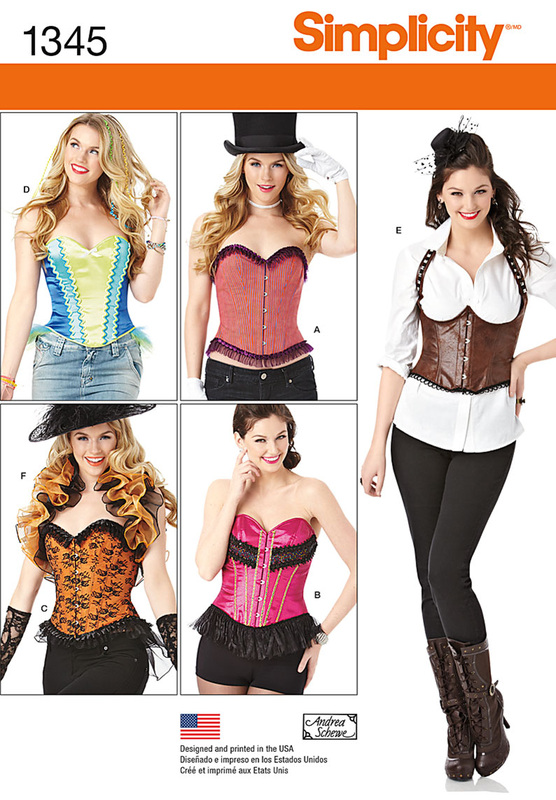
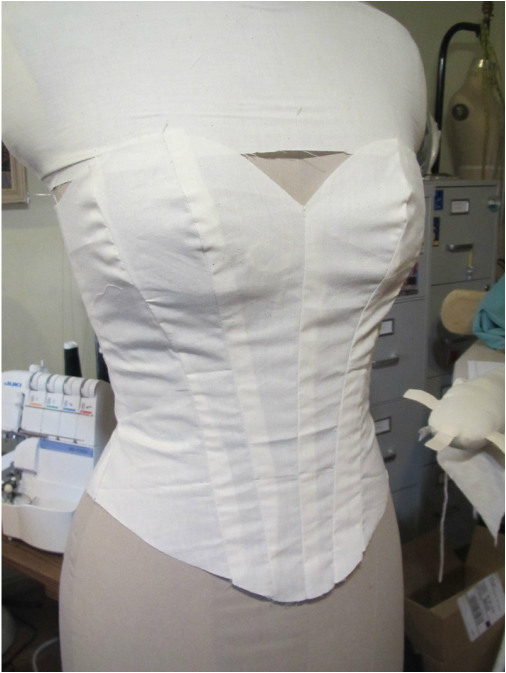
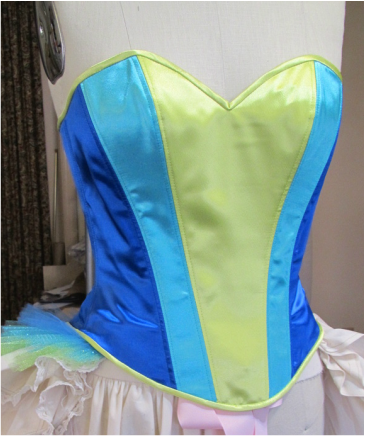
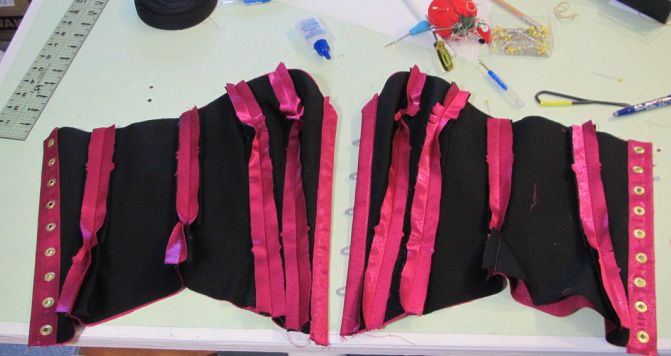
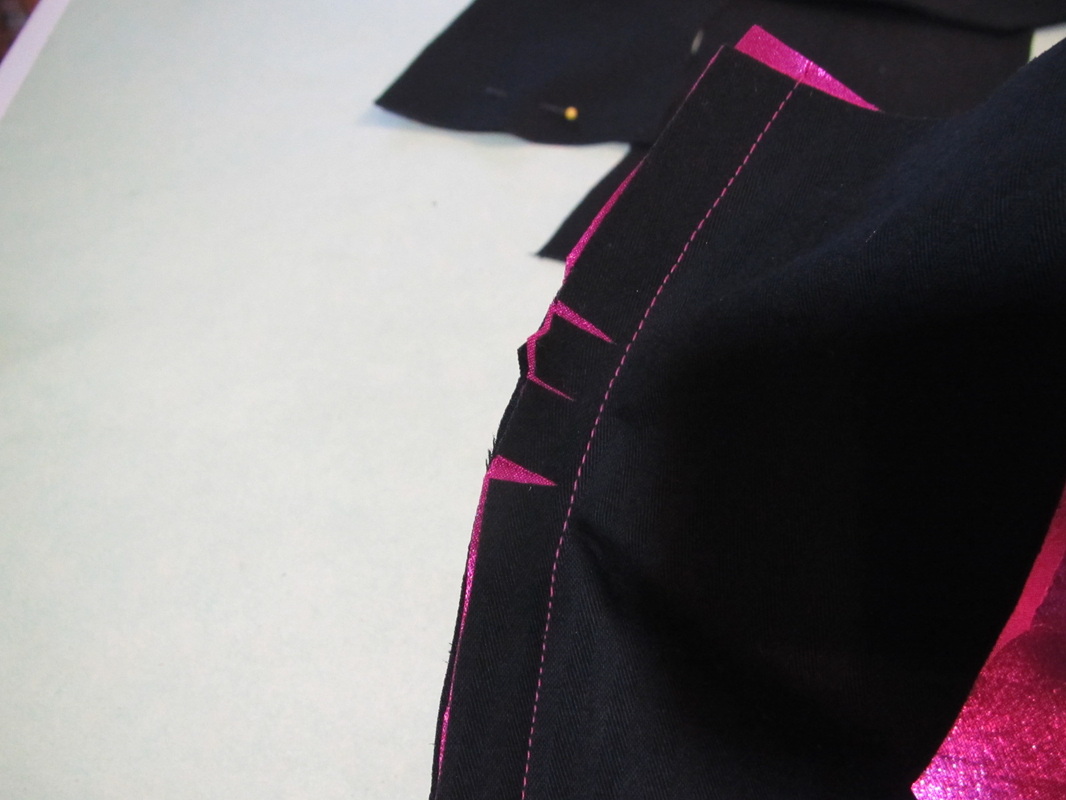
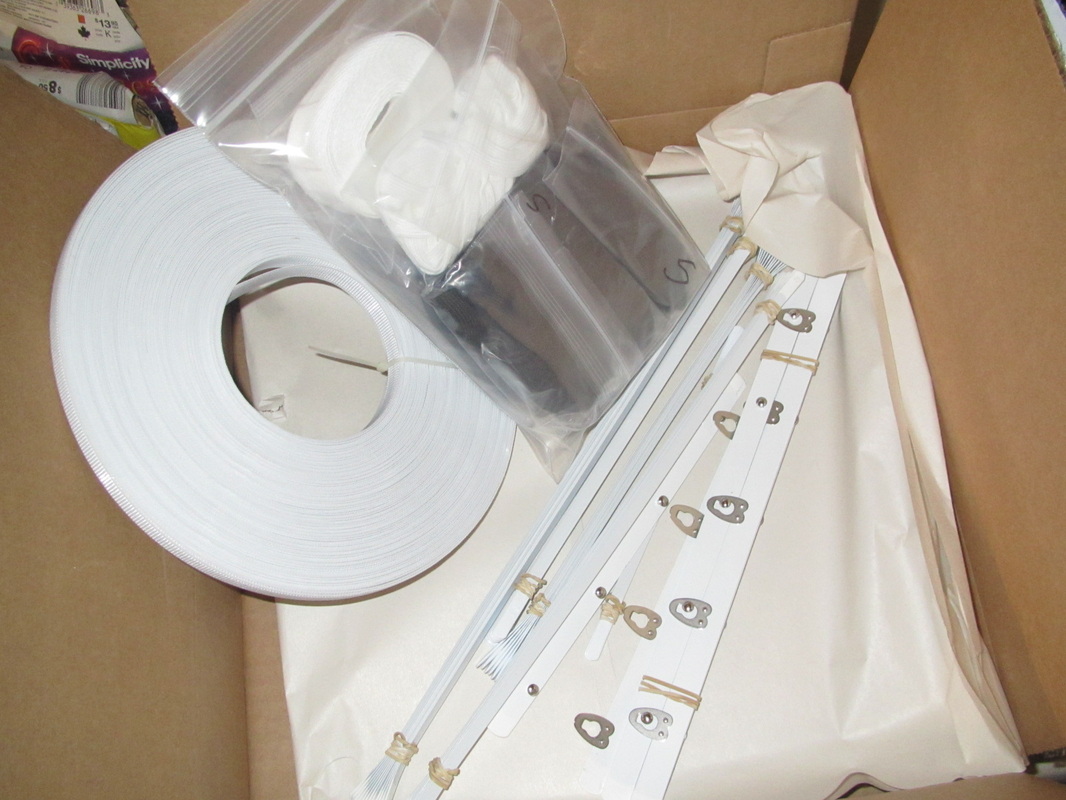
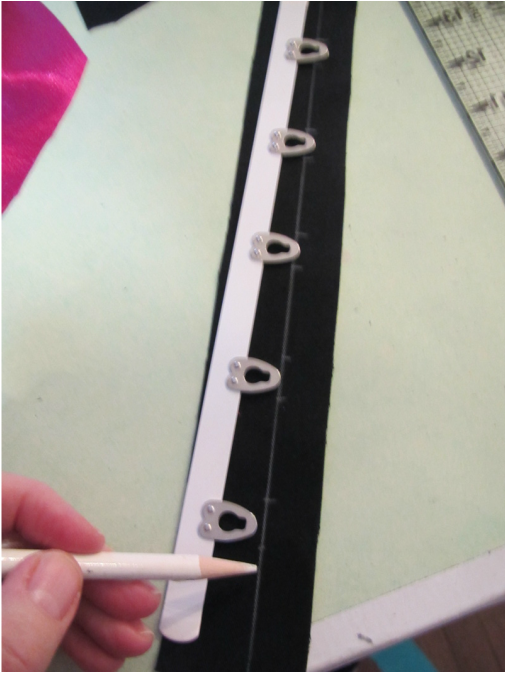
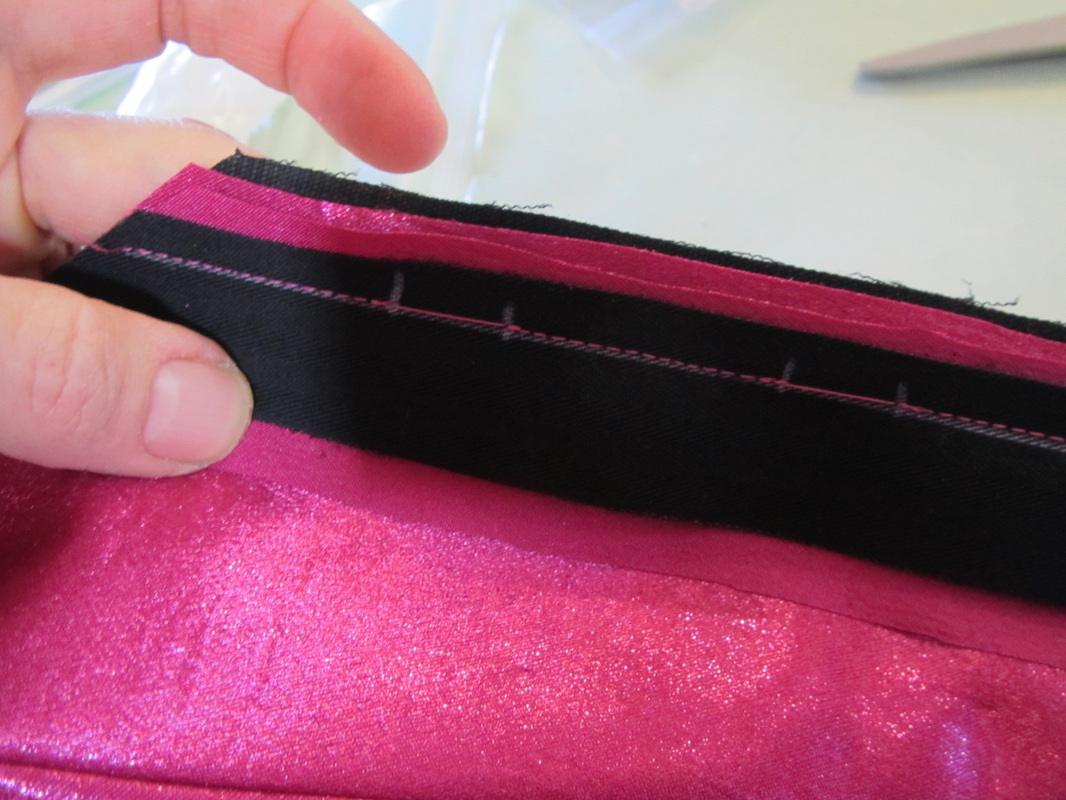
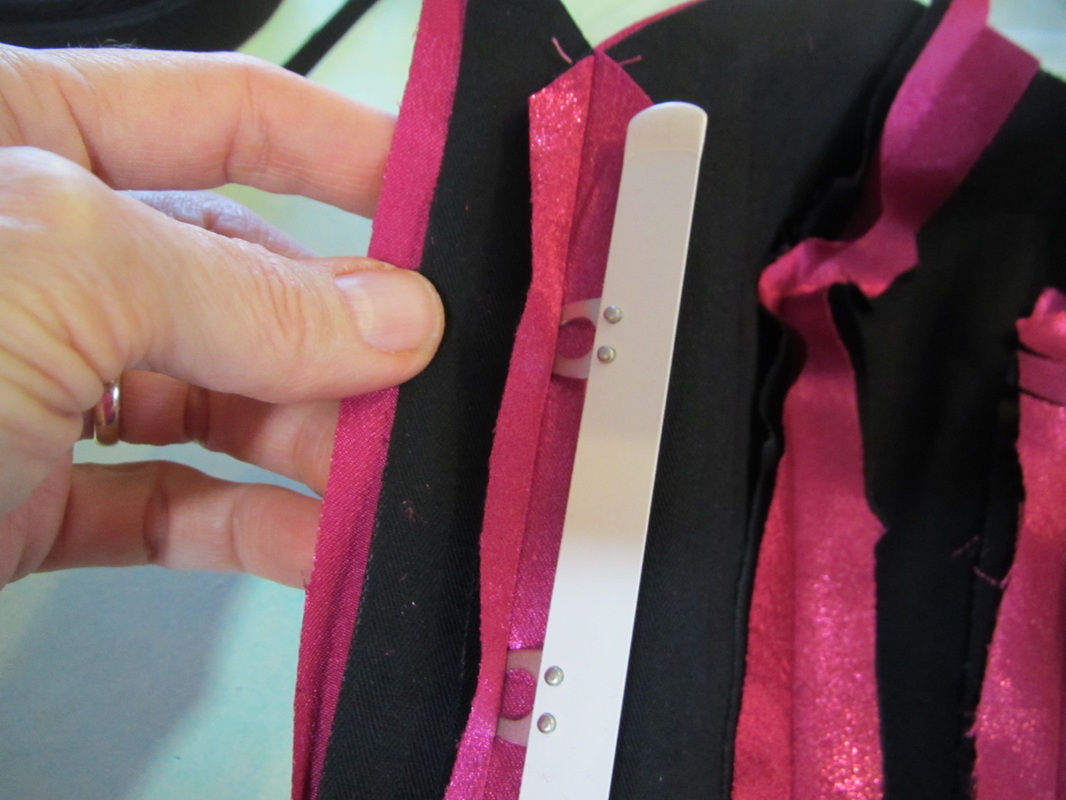
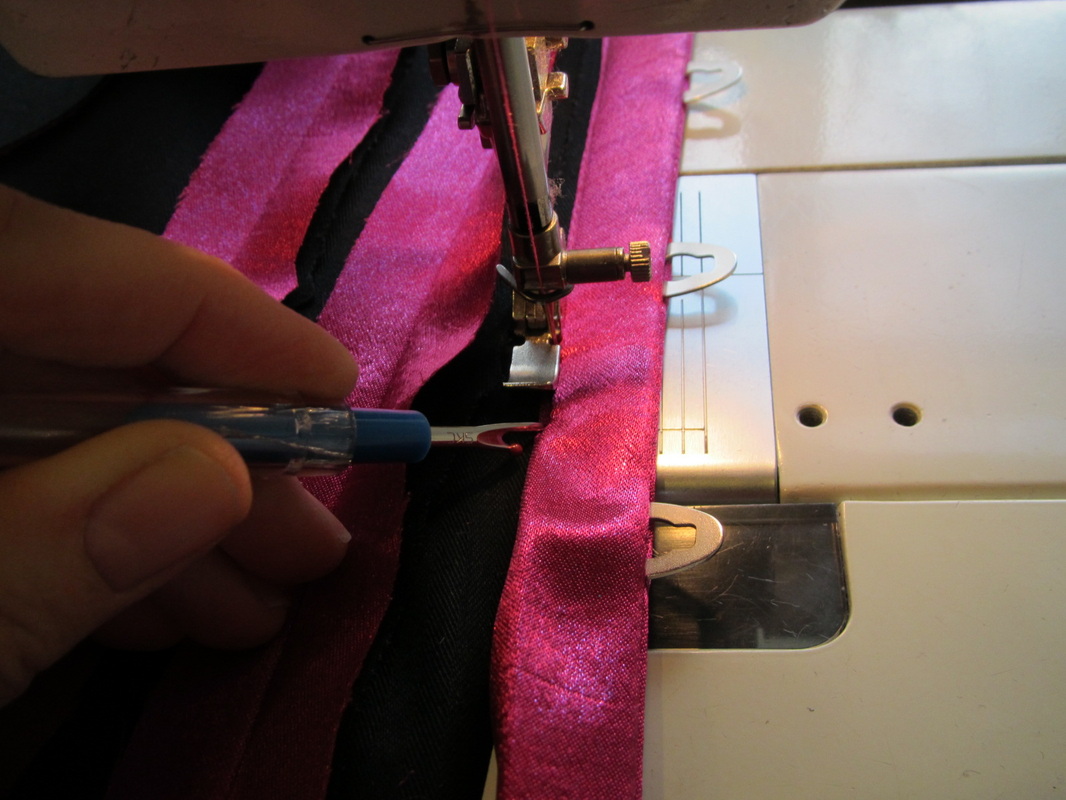
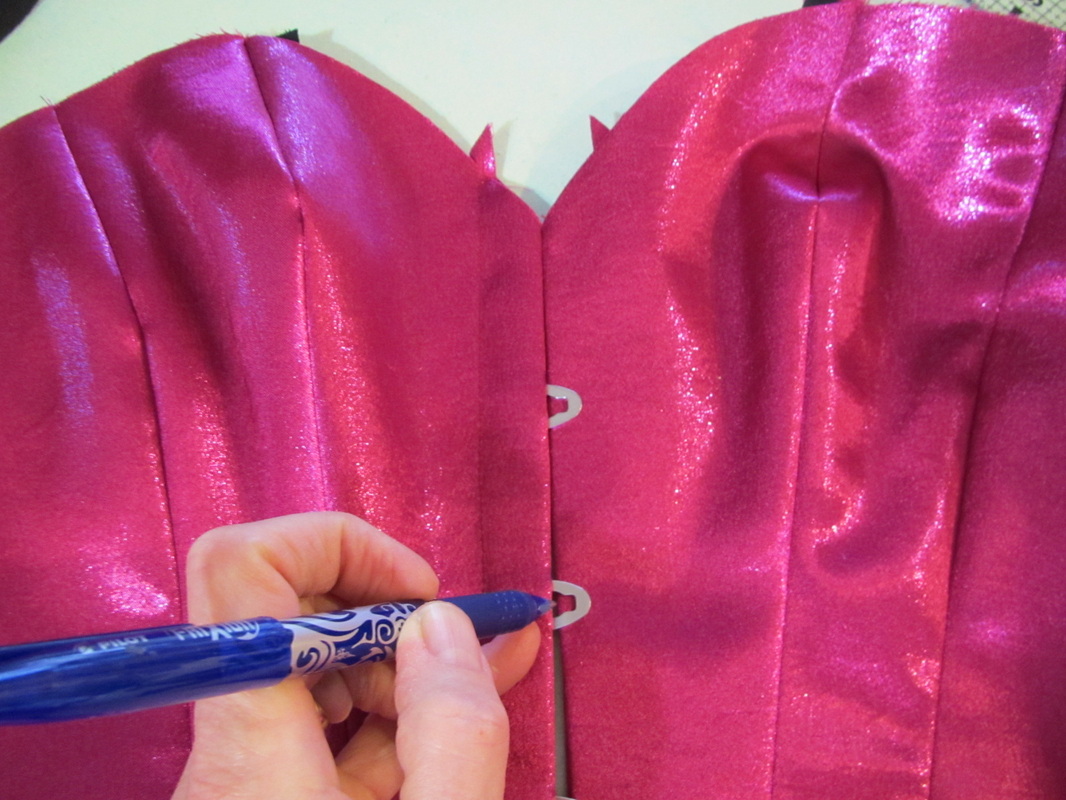
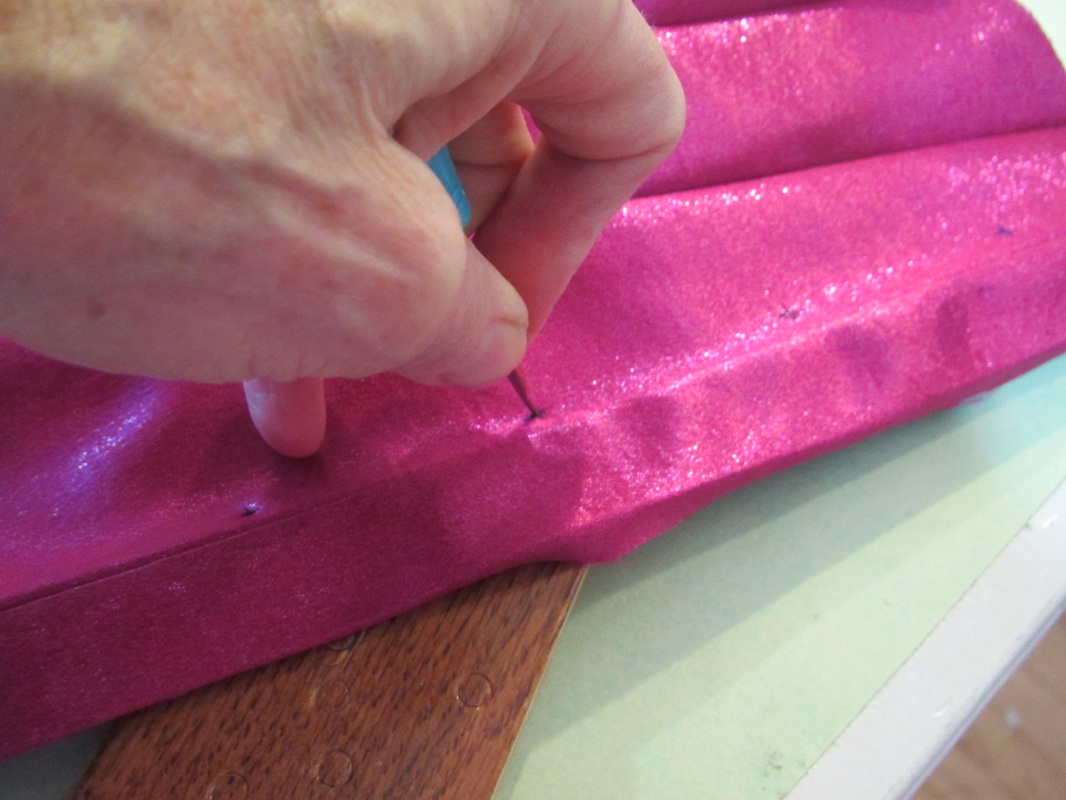
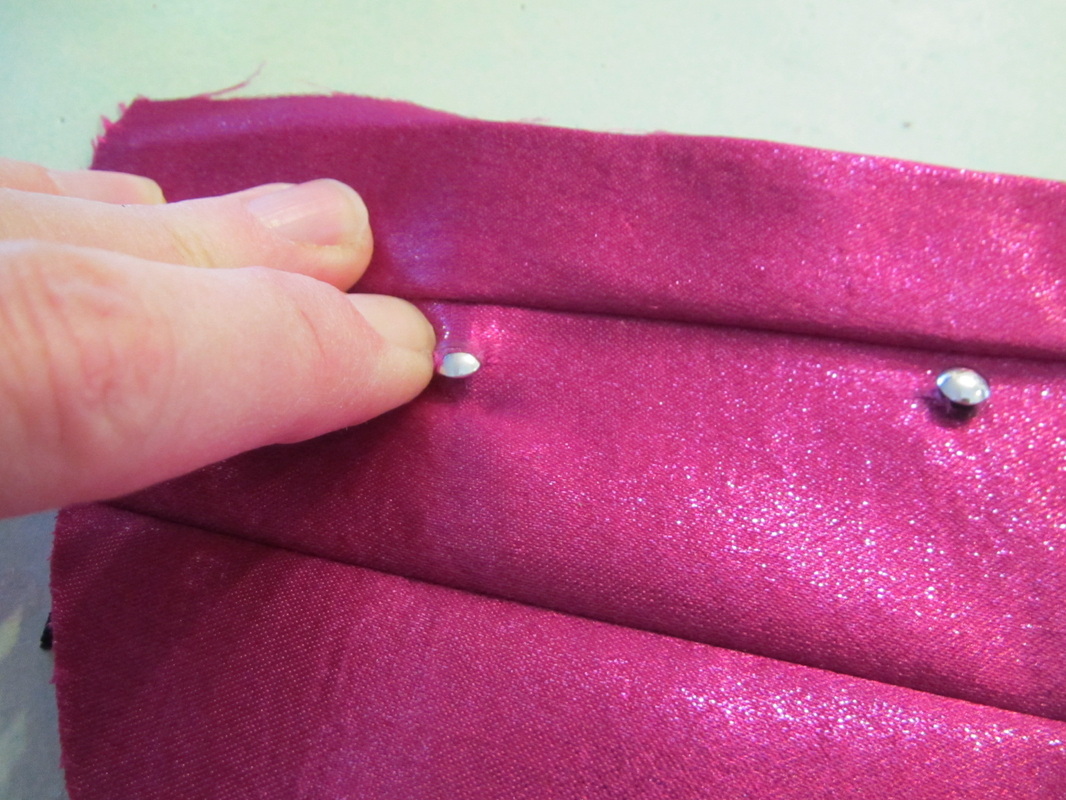
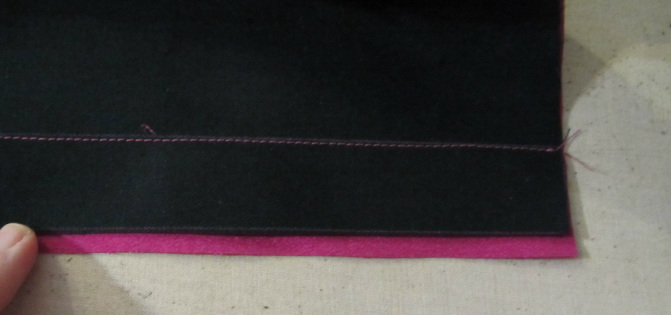
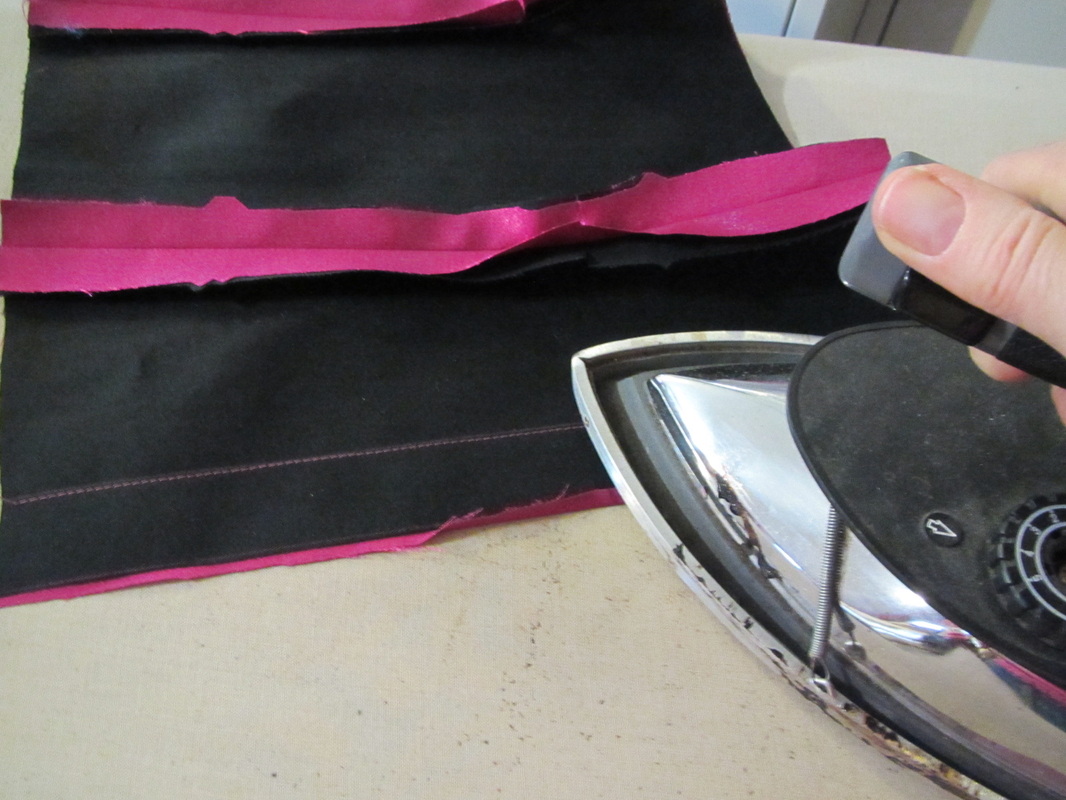
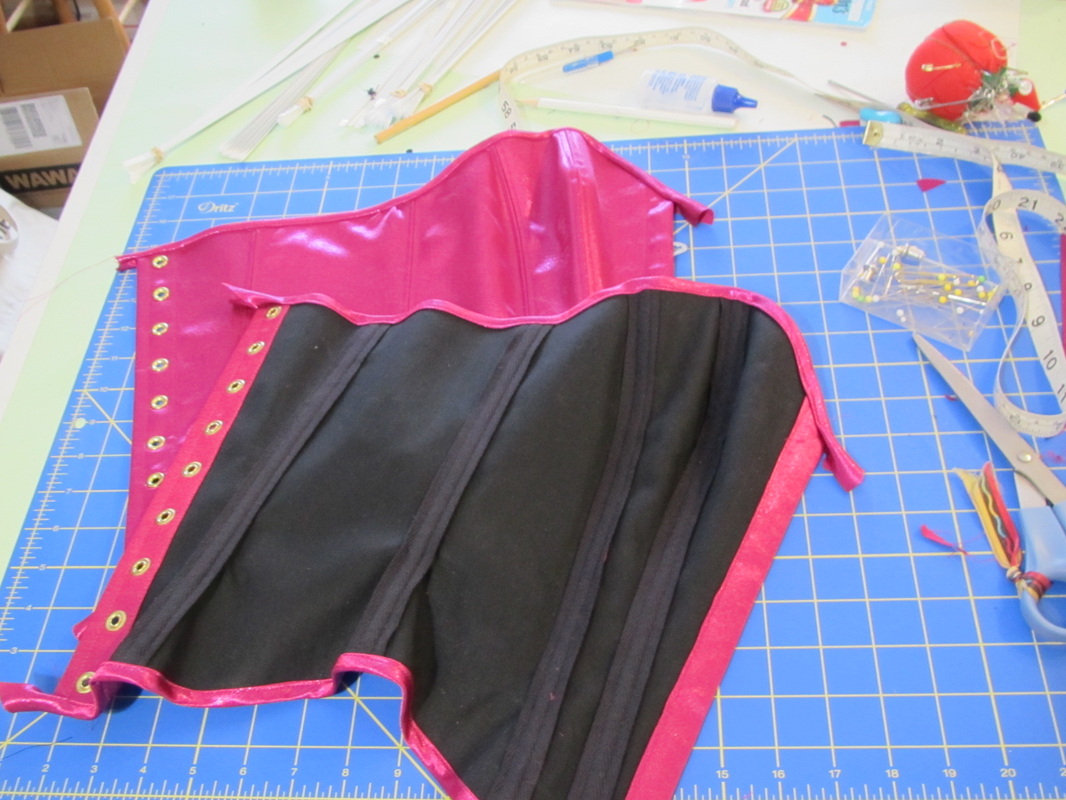
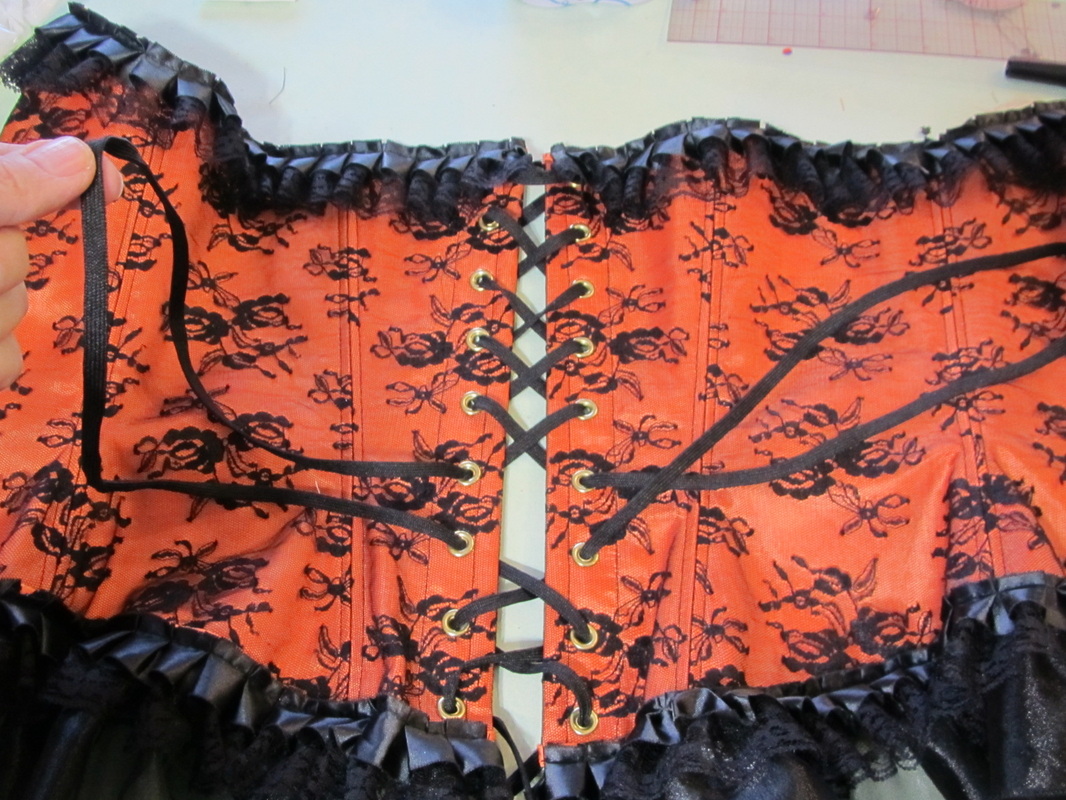
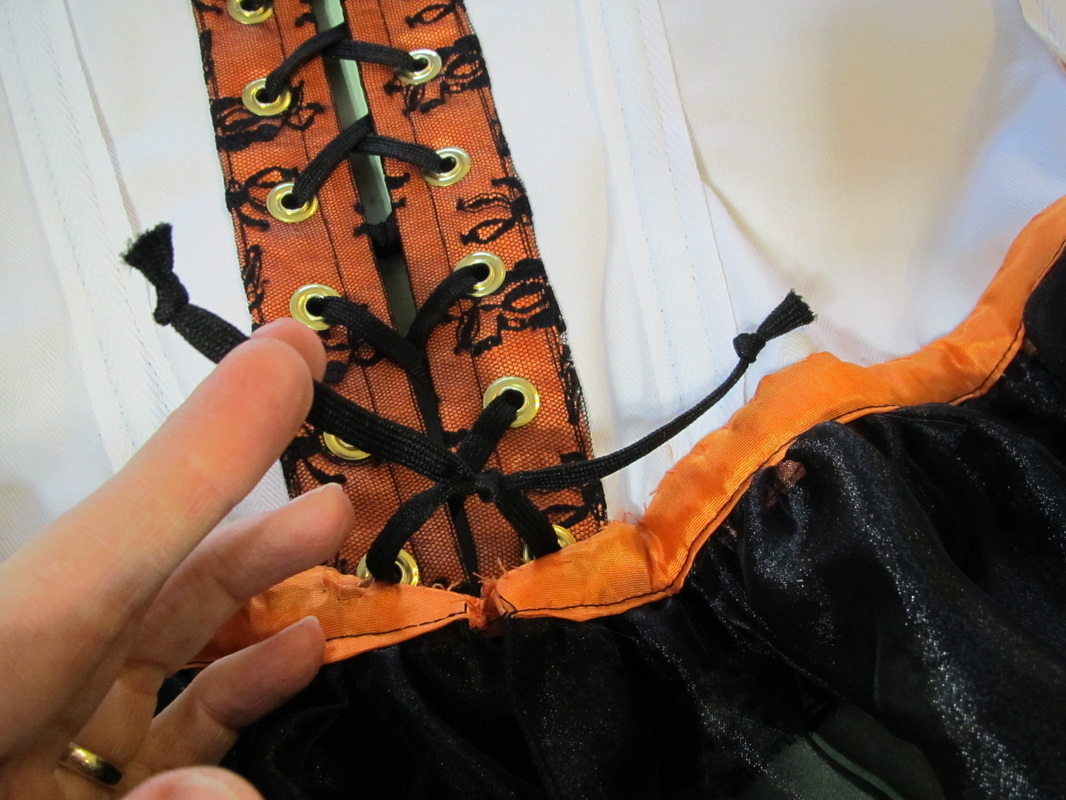
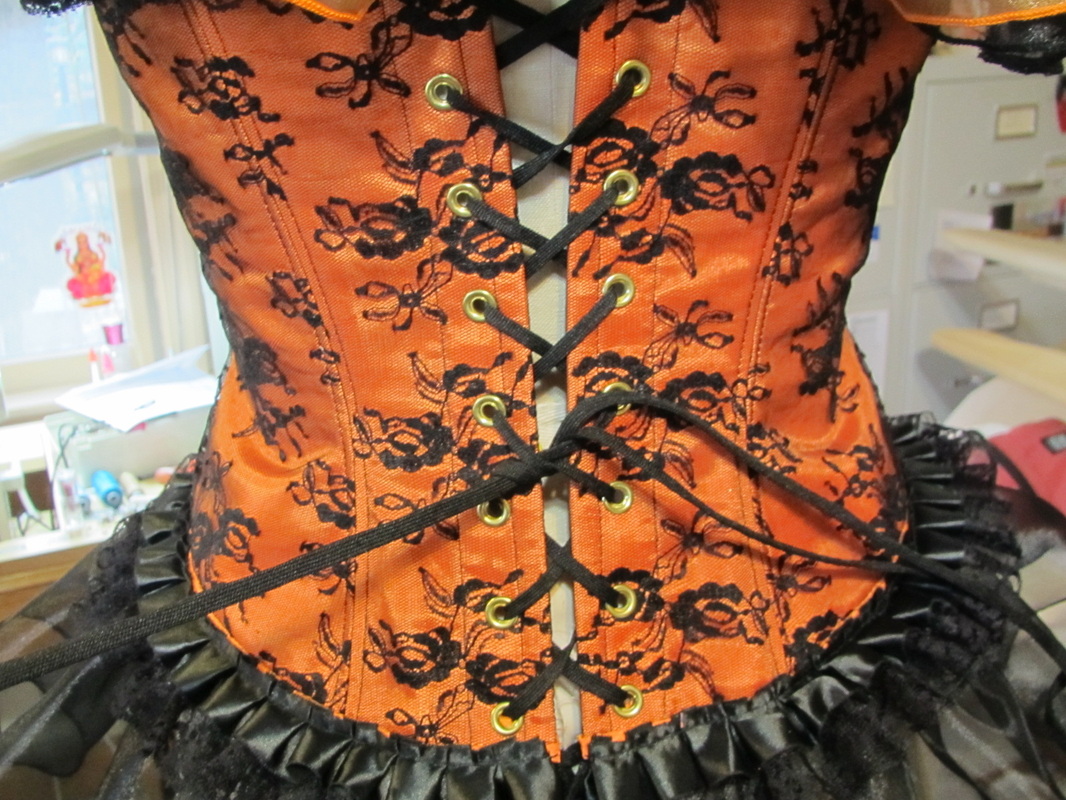
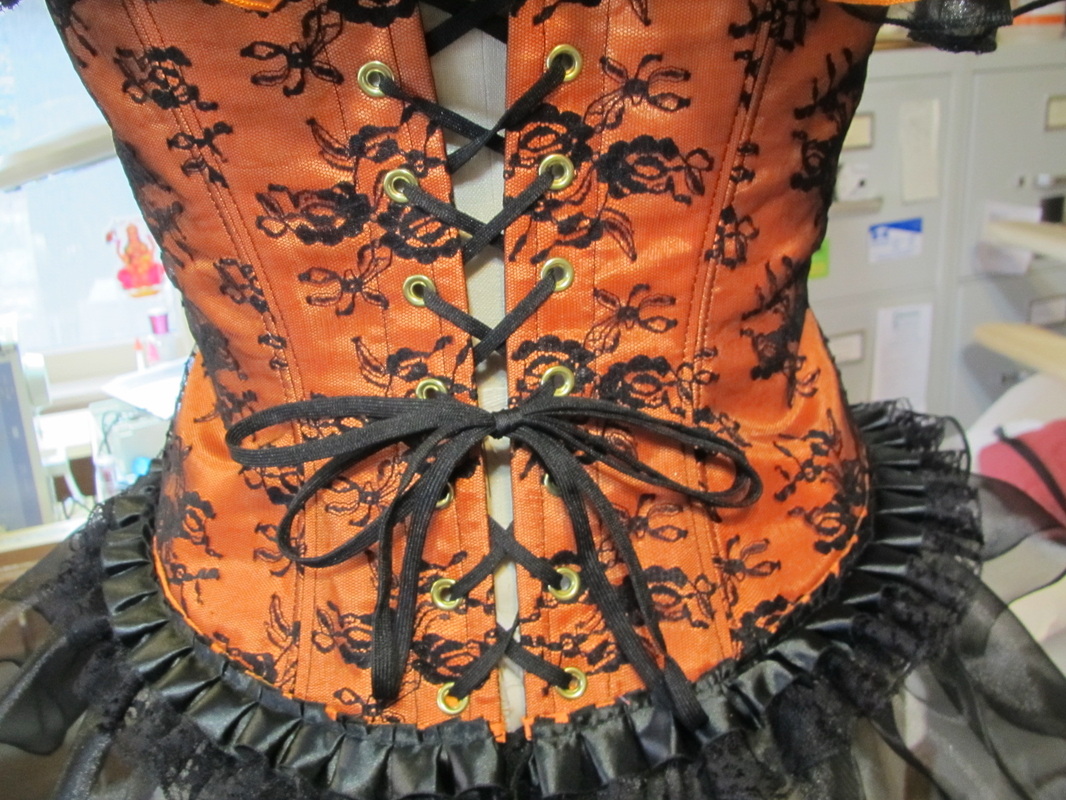
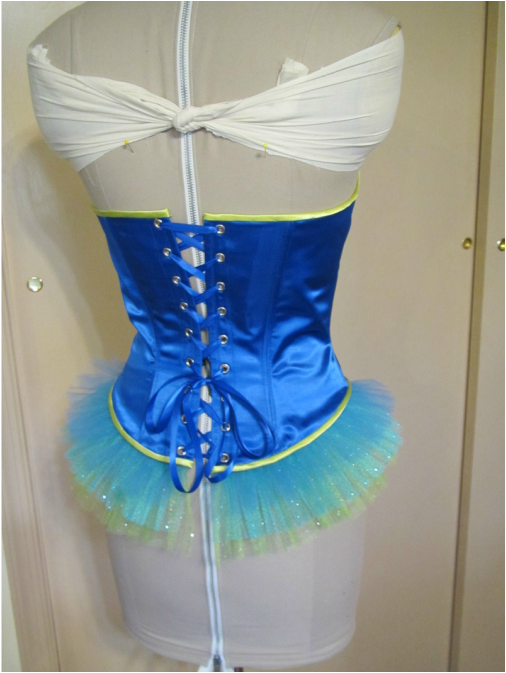
 RSS Feed
RSS Feed